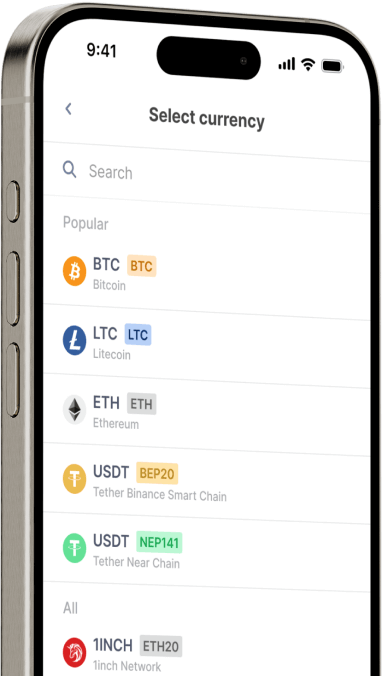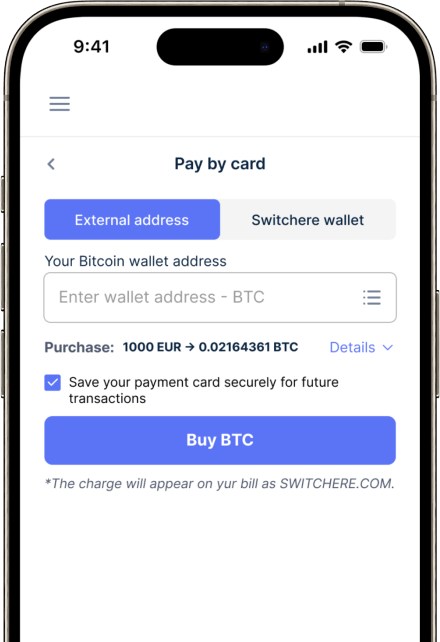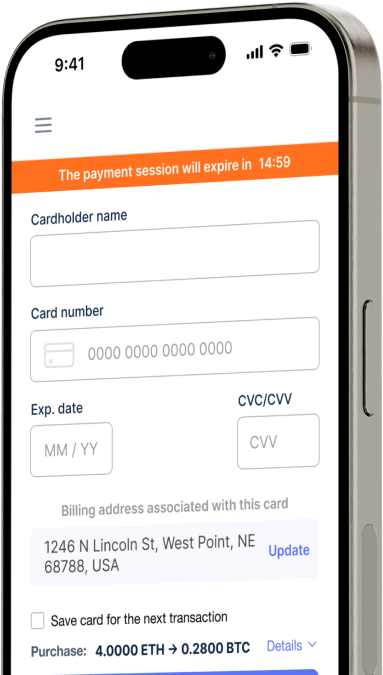Converteer
Romanian Leu (RON) naar Cartesi (CTSI) direct
Koop Cartesi (CTSI) met Romanian Leu (RON) gemakkelijk bij Switchere en profiteer van snelle, veilige transacties.
Over
Cartesi (CTSI)
Cartesi (CTSI) is een Layer-2 infrastructuurplatform dat is ontworpen om het kritieke probleem van computationele schaalbaarheid en hoge kosten op blockchain-netwerken op te lossen. Vaak aangeduid als "The Blockchain OS", is het primaire doel om gedecentraliseerde applicaties (dApps) mogelijk te maken met een complexiteit die kan wedijveren met hun gecentraliseerde Web2-tegenhangers. Cartesi bereikt dit door ontwikkelaars in staat te stellen slimme contracten en dApps te bouwen binnen een volledige Linux-besturingssysteemomgeving, met gebruik van gangbare programmeertalen en softwarestacks. Deze aanpak verlaagt de toetredingsdrempel aanzienlijk voor ontwikkelaars die overstappen van Web2 naar Web3, wat een rijker en krachtiger dApp-ecosysteem bevordert dat is gebouwd op robuuste blockchain-technologie.
De kern van het platform is de Cartesi Machine (CM), een deterministische virtuele machine die intensieve berekeningen off-chain uitvoert. Door gebruik te maken van Optimistic Rollups kan Cartesi deze complexe berekeningen extern verwerken en de resultaten met cryptografische beveiliging verankeren op de onderliggende Layer-1 blockchain, zoals Ethereum. Dit hybride model biedt de immense rekenkracht van off-chain verwerking met het verifieerbare vertrouwen van een on-chain digitaal grootboek. De native utility-token, CTSI, is een integraal onderdeel van de tokenomics van het netwerk. Het wordt gebruikt voor staking binnen Cartesi's Noether Proof-of-Stake (PoS) sidechain, waar node-operators helpen het netwerk te beveiligen en beloningen verdienen. CTSI functioneert ook als de betaalmethode voor reken- en databeschikbaarheidsdiensten binnen het ecosysteem.
Koop andere 150+ cryptocurrencies voor Romanian Leu (RON)
Andere munten voor Romanian Leu (RON)
-
RON naar ZRX
-
RON naar 1INCH
-
RON naar AAVE
-
RON naar ACH
-
RON naar ALGO
-
RON naar TLM
-
RON naar ANKR
-
RON naar APE
-
RON naar NFT
-
RON naar API3
-
RON naar APT
-
RON naar ARPA
-
RON naar AUDIO
-
RON naar AVAX
-
RON naar AVAX
-
RON naar AXS
-
RON naar BADGER
-
RON naar BAL
-
RON naar BNT
-
RON naar BAT
-
RON naar BNB
-
RON naar BSW
-
RON naar BSV
-
RON naar BLUR
-
RON naar BONE
-
RON naar CTSI
-
RON naar CELR
-
RON naar CELO
-
RON naar CEL
-
RON naar LINK
-
RON naar CHZ
-
RON naar CHR
-
RON naar C98
-
RON naar COMP
-
RON naar CFX
-
RON naar PEOPLE
-
RON naar CVX
-
RON naar ATOM
-
RON naar CTC
-
RON naar CRV
-
RON naar DAI
-
RON naar DASH
-
RON naar MANA
-
RON naar DENT
-
RON naar DGB
-
RON naar DYDX
-
RON naar XEC
-
RON naar EOS
-
RON naar ETC
-
RON naar ENS
-
RON naar ETHW
-
RON naar FET
-
RON naar FIL
-
RON naar FLOKI
-
RON naar GALA
-
RON naar GNO
-
RON naar ONE
-
RON naar HBAR
-
RON naar HOT
-
RON naar HOOK
-
RON naar ICX
-
RON naar ILV
-
RON naar IMX
-
RON naar INJ
-
RON naar ICP
-
RON naar IOST
-
RON naar IOTX
-
RON naar JASMY
-
RON naar JST
-
RON naar KAVA
-
RON naar KCS
-
RON naar KSM
-
RON naar KNC
-
RON naar LDO
-
RON naar LQTY
-
RON naar LPT
-
RON naar LOOKS
-
RON naar LRC
-
RON naar LUNA
-
RON naar MKR
-
RON naar MASK
-
RON naar EGLD
-
RON naar ALICE
-
RON naar NEAR
-
RON naar XEM
-
RON naar NEXO
-
RON naar NOT
-
RON naar NMR
-
RON naar OKB
-
RON naar OMG
-
RON naar ONT
-
RON naar EDU
-
RON naar OP
-
RON naar OGN
-
RON naar CAKE
-
RON naar PAXG
-
RON naar PENDLE
-
RON naar DOT
-
RON naar POL
-
RON naar QTUM
-
RON naar QNT
-
RON naar RDNT
-
RON naar XRD
-
RON naar RVN
-
RON naar REN
-
RON naar RSR
-
RON naar RLC
-
RON naar RPL
-
RON naar SFP
-
RON naar SHIB
-
RON naar SKL
-
RON naar SXP
-
RON naar STND
-
RON naar STG
-
RON naar XLM
-
RON naar GMT
-
RON naar STORJ
-
RON naar STMX
-
RON naar SUSHI
-
RON naar SNX
-
RON naar USDT (Polygon)
-
RON naar USDT (AVAC)
-
RON naar USDT (BEP20)
-
RON naar USDT (ERC20)
-
RON naar USDT (SPL)
-
RON naar USDT (NEP141)
-
RON naar USDT (FA2)
-
RON naar USDT (TRC20)
-
RON naar USDT (JETTON)
-
RON naar XTZ
-
RON naar GRT
-
RON naar SAND
-
RON naar TFUEL
-
RON naar THETA
-
RON naar RUNE
-
RON naar TON
-
RON naar TUSD (BEP20)
-
RON naar TUSD (TRC20)
-
RON naar TWT
-
RON naar UOS
-
RON naar UMA
-
RON naar UNI
-
RON naar USDC (Polygon)
-
RON naar USDC (SPL)
-
RON naar USDC (OP)
-
RON naar USDC (BEP20)
-
RON naar USDC (AVAC)
-
RON naar USDC (ARB)
-
RON naar USDC (ERC20)
-
RON naar VET
-
RON naar VRA
-
RON naar WAXP
-
RON naar WOO
-
RON naar WLD
-
RON naar WBTC
-
RON naar WMINIMA
-
RON naar XDC
-
RON naar YFI
-
RON naar YGG
-
RON naar ZIL
Hoe Cartesi (CTSI) kopen
Veelgestelde vragen
-
Wat vertegenwoordigt het RON/CTSI-handelspaar in de markt voor digitale activa?
Het RON/CTSI-paar vertegenwoordigt een directe swap tussen RON, de native ecosysteemtoken van het Ronin-netwerk, een op gaming gerichte blockchain, en CTSI, de utility-token voor Cartesi, een Layer-2-platform dat complexe off-chain berekeningen mogelijk maakt met behulp van een Linux-omgeving. Het verhandelen van dit paar stelt gebruikers in staat waarde uit te wisselen tussen het Delegated Proof of Stake (DPoS)-ecosysteem van Ronin en de optimistic rollups-infrastructuur van Cartesi, wat vaak gebeurt op een gedecentraliseerde exchange (DEX).
-
Wat zijn de technische verschillen tussen de Ronin- en Cartesi-netwerken waarmee rekening moet worden gehouden tijdens een swap?
Ronin is een EVM-compatibele sidechain geoptimaliseerd voor gaming met een Delegated Proof of Stake (DPoS)-consensus, wat leidt tot snelle, goedkope transacties die in RON worden betaald. Cartesi daarentegen is een Layer-2-oplossing die gebruikmaakt van optimistic rollups (Descartes Rollups) die transacties bundelen voor off-chain berekeningen om de schaalbaarheid op Layer-1-ketens zoals Ethereum te verbeteren. Een swap kan plaatsvinden op Ronin's native Katana DEX als CTSI daar beschikbaar is, of het kan nodig zijn om RON naar Ethereum te overbruggen om te handelen op een DEX waar de ERC-20-versie van CTSI is genoteerd, wat hogere gaskosten met zich meebrengt.
-
Hoe bewaar ik zowel RON- als CTSI-tokens veilig na het voltooien van een transactie?
Veilige opslag vereist het gebruik van geschikte digitale wallets voor elk netwerk. RON-tokens moeten worden opgeslagen in een speciale Ronin Wallet. Aangezien CTSI voornamelijk een ERC-20-token is, moet het worden opgeslagen in een Ethereum-compatibele wallet zoals MetaMask, Trust Wallet, of voor maximale beveiliging, een hardware wallet (bijv. Ledger, Trezor). Zorg er altijd voor dat u de controle heeft over uw privésleutels of seed phrase en deel deze nooit. Wees voorzichtig met phishing-scams die om uw wallet-gegevens vragen.
-
Wat is de primaire use case voor het swappen van RON naar CTSI?
De primaire use case is portefeuillediversificatie van een op gaming gericht ecosysteem naar een ecosysteem dat zich richt op brede dApp-ontwikkelingsschaalbaarheid. Een gebruiker die RON bezit, kan swappen naar CTSI om blootstelling te krijgen aan de technologie van Cartesi, waarmee ontwikkelaars gedecentraliseerde applicaties kunnen bouwen met mainstream softwarestacks binnen de Cartesi Machine. Dit is een strategische zet om te investeren in een Layer-2-oplossing die is ontworpen om computationele beperkingen op blockchains zoals Ethereum op te lossen.
-
Wat voor soort kosten kan ik verwachten bij het verhandelen van RON voor CTSI?
Bij het verhandelen van RON voor CTSI komt u verschillende potentiële kosten tegen. Als u swapt op een DEX zoals Katana op het Ronin-netwerk, betaalt u een kleine netwerkgasfee in RON en een liquiditeitsverschaffersfee (meestal 0,3%). Als de transactie het overbruggen van RON naar Ethereum vereist, maakt u brugkosten en vervolgens aanzienlijk hogere Ethereum-gaskosten voor de swap op een op Ethereum gebaseerde DEX. Wees bovendien alert op mogelijke prijsslippage op elke DEX, wat het verschil is tussen de verwachte en de uitgevoerde prijs van uw transactie.
-
Kan ik zowel RON als CTSI staken, en hoe verschillen hun mechanismen?
Ja, beide tokens kunnen worden gestaked, maar hun mechanismen dienen verschillende doelen. RON-staking is essentieel voor de beveiliging van de Delegated Proof of Stake (DPoS)-consensus van het Ronin-netwerk. Gebruikers delegeren hun RON aan een validatorknooppunt om een deel van de transactiekosten en blokbeloningen te verdienen. CTSI-staking, onderdeel van Cartesi's Noether Proof-of-Stake sidechain, wordt gebruikt om knooppuntoperatoren voor het Cartesi-netwerk te selecteren, waardoor de gegevensbeschikbaarheid voor zijn optimistic rollups wordt gegarandeerd. Het staken van CTSI stimuleert eerlijke deelname aan het Cartesi-ecosysteem.




